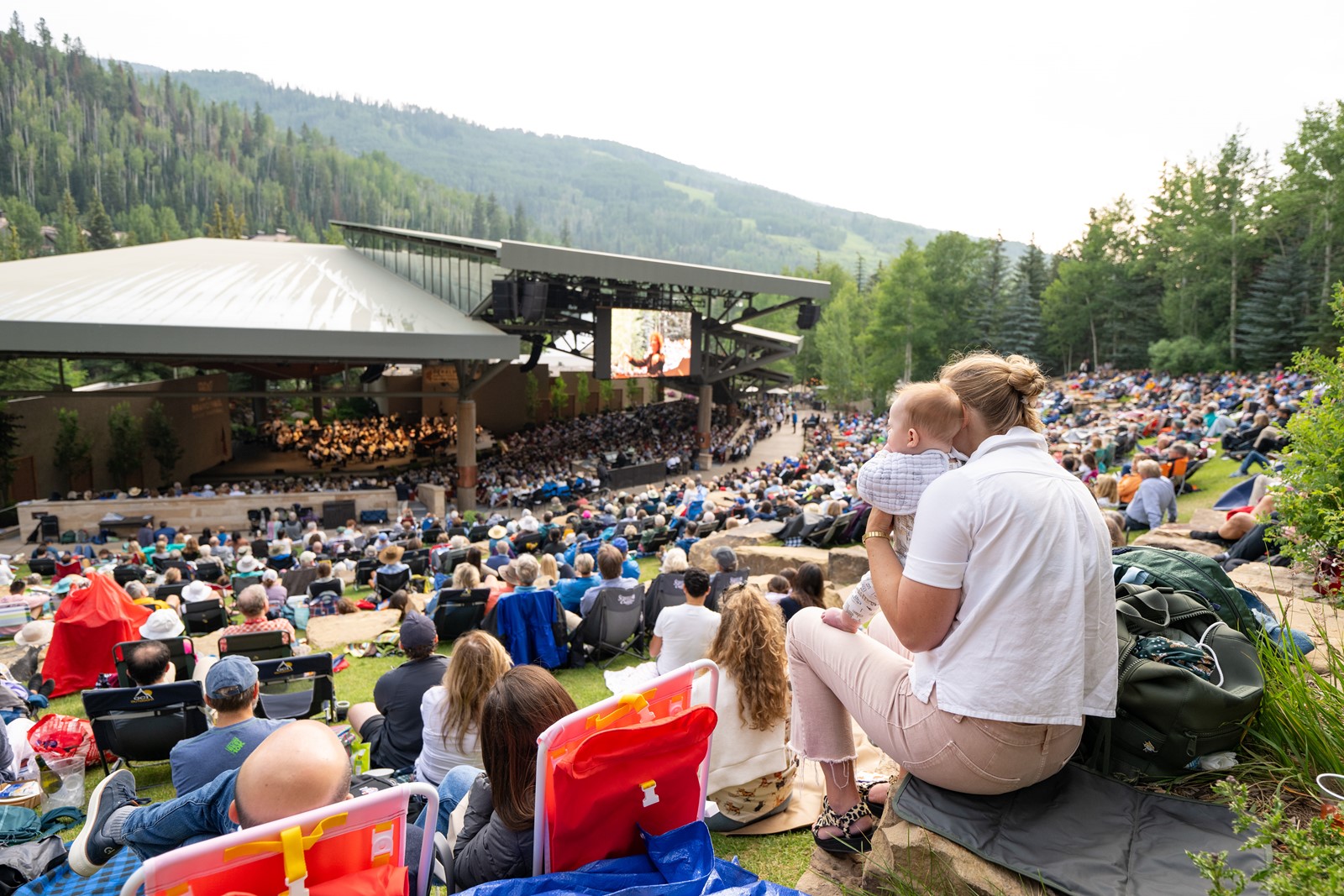
Classical music fans know how it is to arrive at a concert in the summer. There are people with picnic baskets, and folks in short pants and sandals. There are families with young children, sometimes even babies — an audience demographic that is not particularly welcome at performances of Mozart, Bach and Brahms held during the rest of the year.
It’s not just the people who are different. It’s the venues, too. Opera houses and concert halls, with their controlled acoustics and expensive architecture, are switched out for sheds, shells, tents and open-air amphitheaters. Parking garages are replaced with parking lots. There is less traffic.
For sure, the classical set is not as uptight as it used to be during regular performances at urban concert halls. Events now are less formal and more welcoming to newcomers who do not already know the fare. But there are still rules about how one should behave, as in, be on time, clap when appropriate, and expect to get shushes if you are talking during the show.
That can be a good thing — classical concerts offer one of the last remaining places to dress up and they are excellent ways to teach kids the varieties of social etiquette — but they can also appear a bit stuffy for many people, and that is rarely a part of warm-season events.
Of course, it’s not all upsides on the outside. The sound can be terrible. Planes fly over. Bugs float around. Rain is the enemy. And those babies can still be trouble; they just don’t understand the rules of the game.
But it feels different for audiences in the summer, relaxed and adventurous at the same time. Because concerts are held in parks and open spaces, and often in remote, resort cities, the whole excursion can seem closer to nature, which happens to be a common theme in the many symphonies that drive the programming for the art form.
So, what is it like on the other side of the stage, for the musicians who are working while the rest of the room is chilling out?
In some ways, very different. They often have to travel a bit for their job. The main summer classical presenters in this region tend to be far-flung, and that includes the Aspen Music Festival (which continues through Aug. 24), the Bravo! Vail Music Festival (which finished up June 22), the Colorado Music Festival in Boulder (through Aug. 3), the Santa Fe Opera (through Aug. 23), and the Central City Opera (through Aug. 3).
Those round out offerings closer to the urban center. The Arvada Center presents a classical music series “under the stars.” There are performances at fairs and festivals, and the Colorado Symphony always makes a few special appearances at Red Rocks Amphitheatre. For example, the orchestra will pair up with pop star Beck on July 25.
For the musicians, conditions vary at each venue. For example, when they arrive, there might not be dressing rooms or spaces designated for the woodwinds or the strings to warm up, amenities that are often built-in at formal concert halls. They play for audiences who tend to be less familiar with the music and more distracted by their surroundings, sometimes munching on grapes or clinking together wine glasses.
Does that impact their performance?
That is the perfect question for Peter Oundjian, who exists in both the winter and summer classical worlds. Oundjian — an industry star who spent years as a violinist touring the globe before turning to conducting — is the music director for the Colorado Symphony, which regularly performs at the elegant Boettcher Concert Hall in Denver from September to June.
But then in July and August, he moves his show north and works as the music director for the Colorado Music Festival, which has a separate orchestra of its own. The fest takes place at the Chautauqua Auditorium, located among open spaces in Boulder. The hall is a historic, wooden building with a rustic edge and natural lighting.
“I find it refreshing,” Oundjian said about the change of scenery that comes about in summer, and he is particularly fond of the venue in Boulder. “Obviously, we feel very fortunate to have Chautauqua because it’s such a beautiful experience just to walk in there.”
Oundjian has played at numerous outdoor venues, including one festival where he remembers sharing the bill with horse shows. He will also conduct at Bravo! Vail this summer, which performs in the large Gerald R. Ford Amphitheater, where many people sit on the lawn.
Every venue has its benefits and its quirks. Sometimes the acoustics are sur
prisingly good. Other times, you get mosquito bites. Those unpredictable elements can impact all those violinists and tuba players in different ways as they prepare for a show.
“It’s a very different thing turning up already dressed,” Oundjian said. “Basically, you don’t have anywhere really to warm up, except on stage.”
But the performers gradually feel the vibe of the setting, and the audience, and chill out on their own terms.
“I’m not saying they don’t come with their A-game, because they absolutely do,” he said. “But it’s a much more casual thing.”
Ray Mark Rinaldi is a Denver-based freelance writer specializing in fine arts.


 PREVIOUS ARTICLE
PREVIOUS ARTICLE
